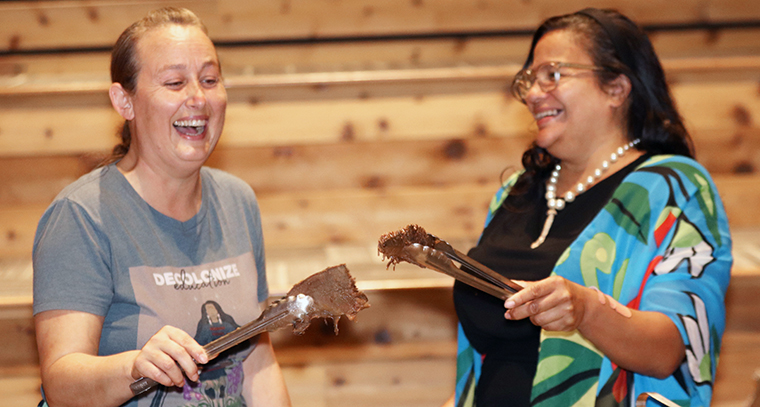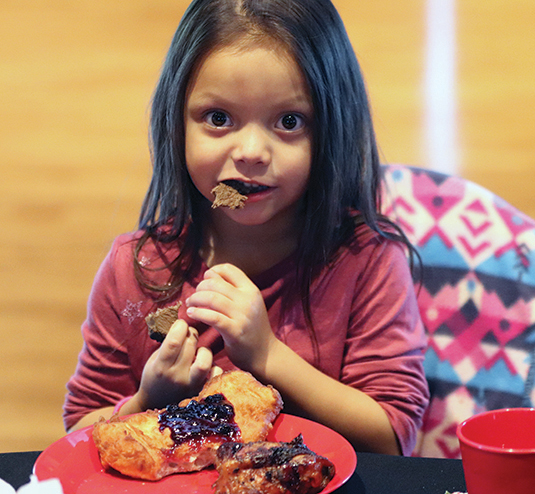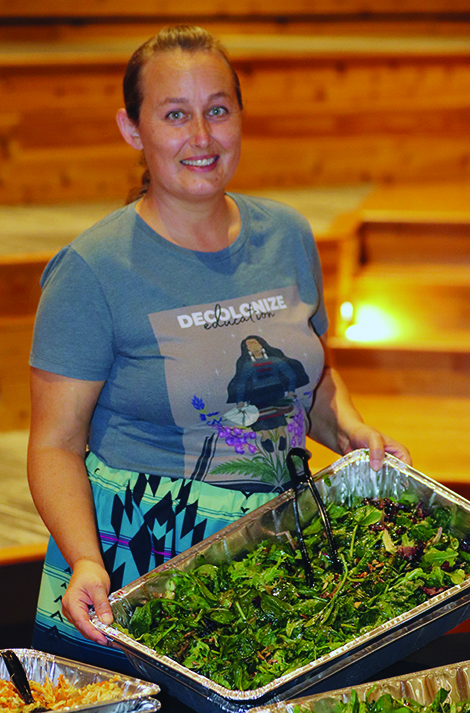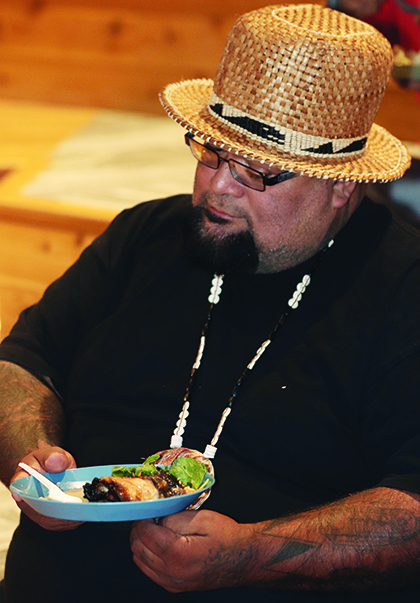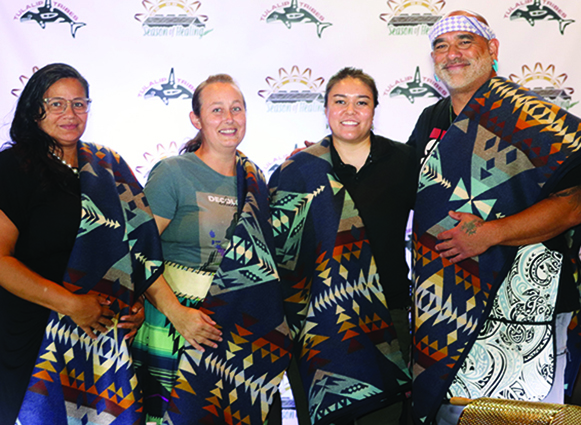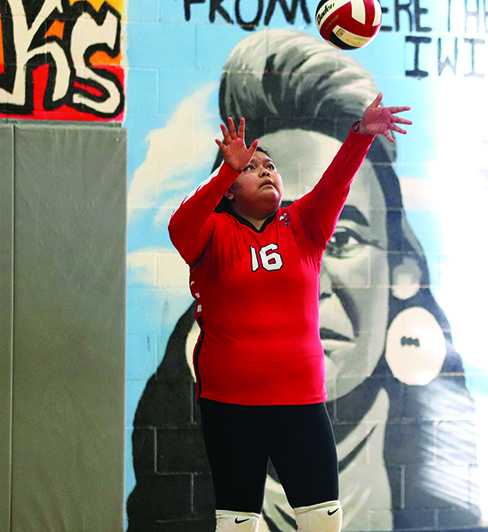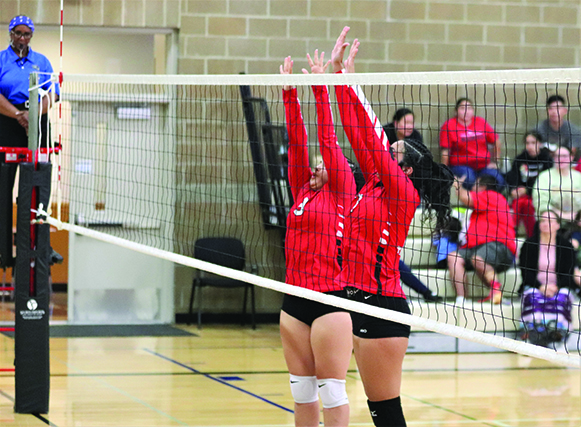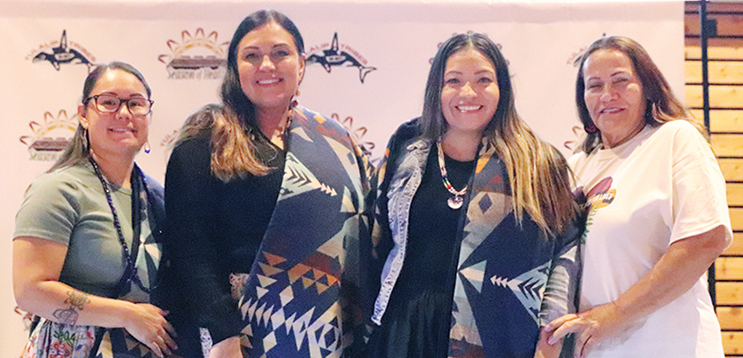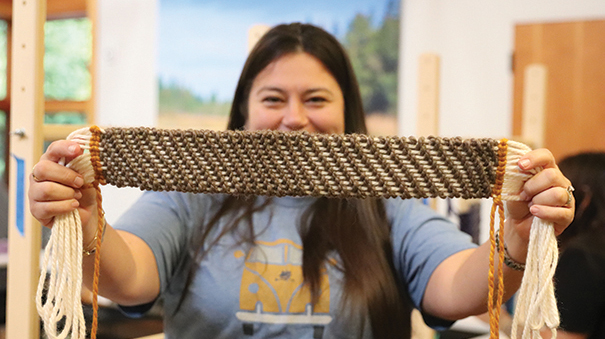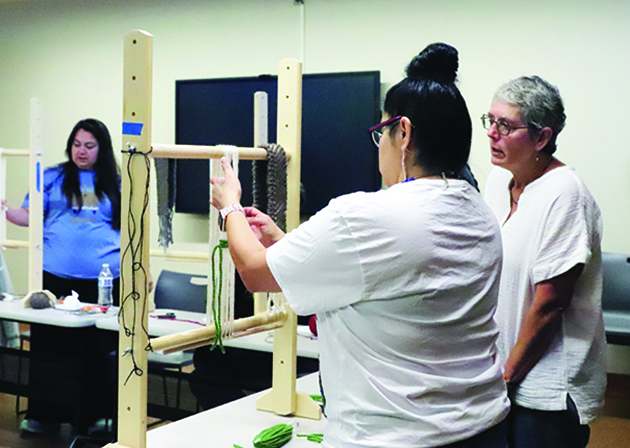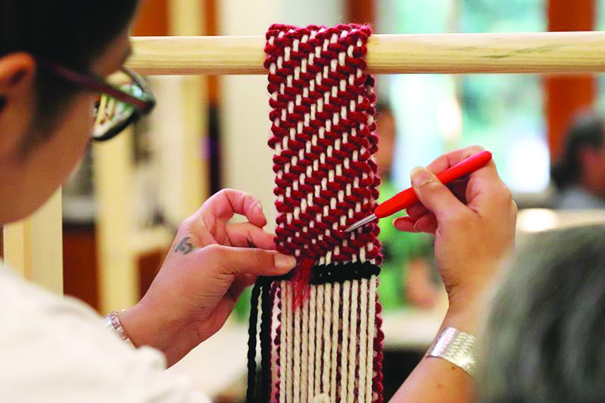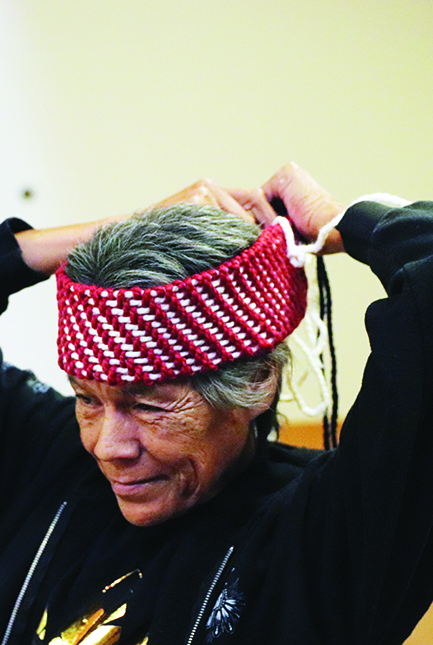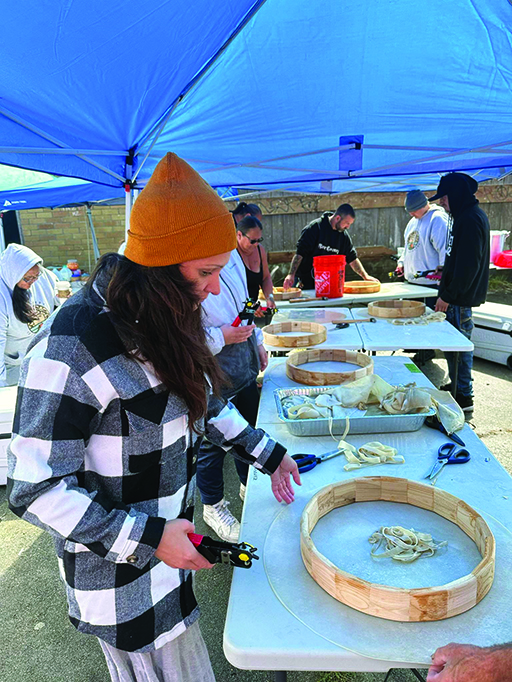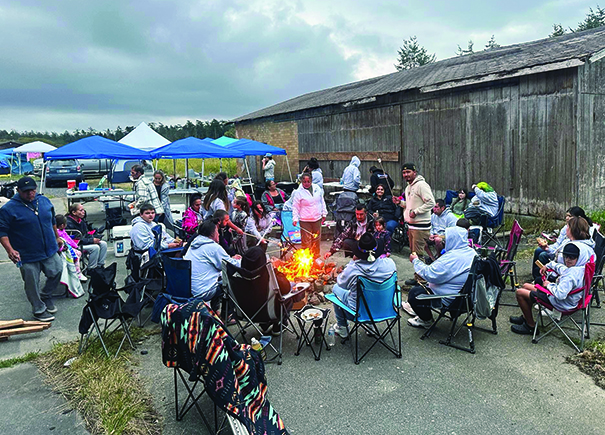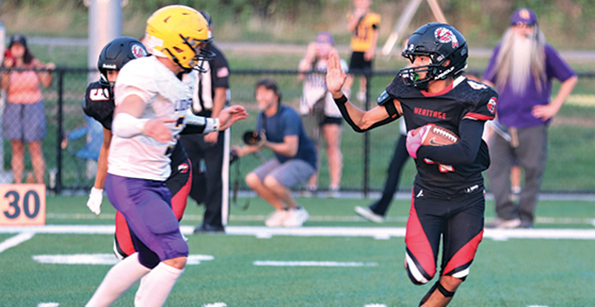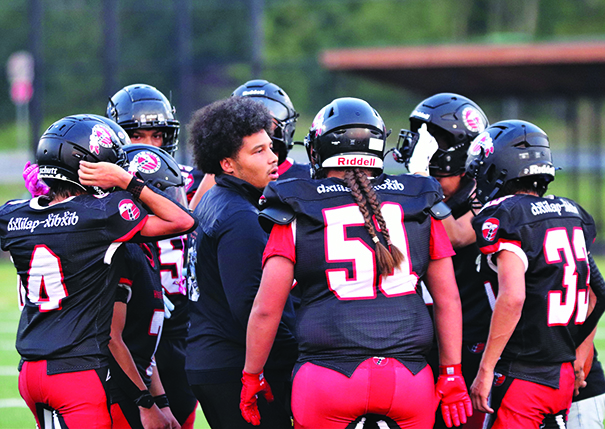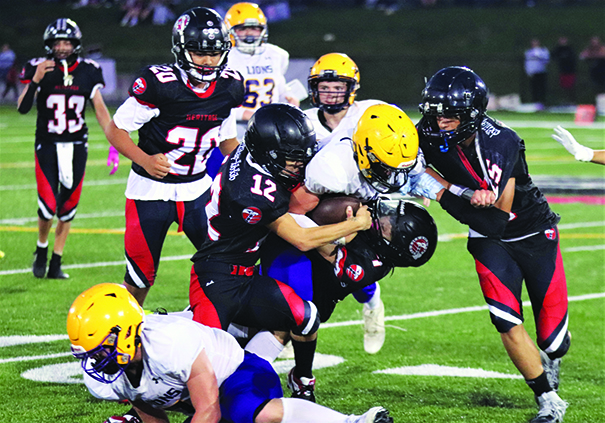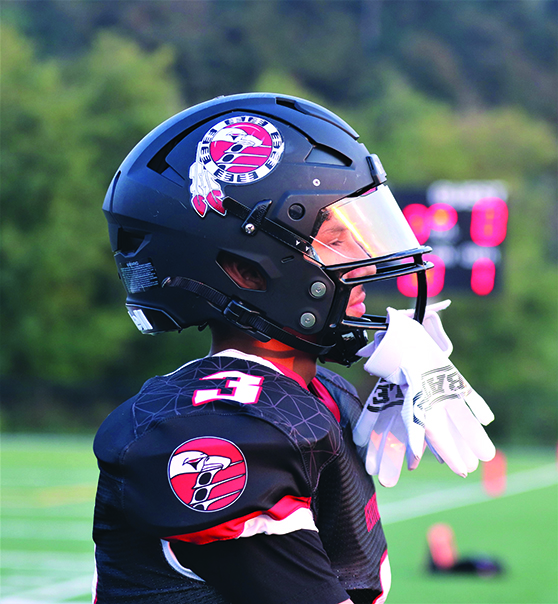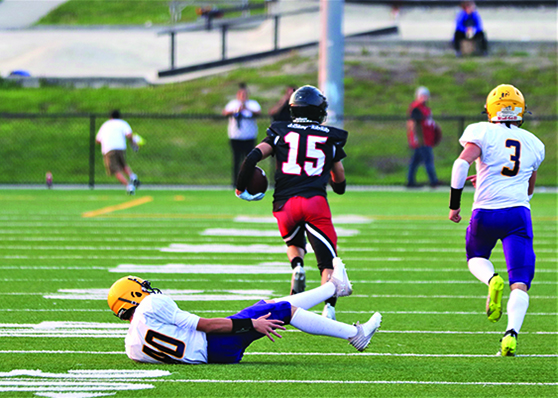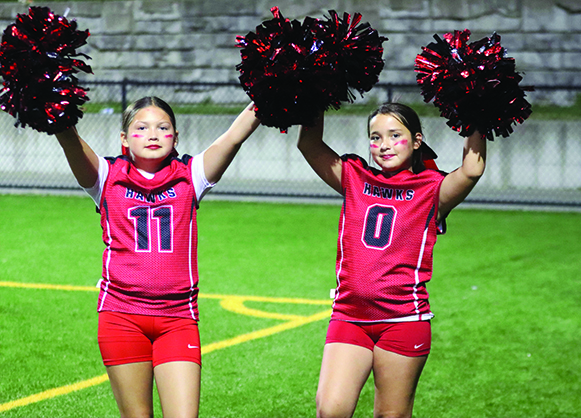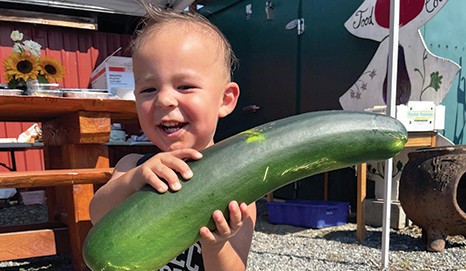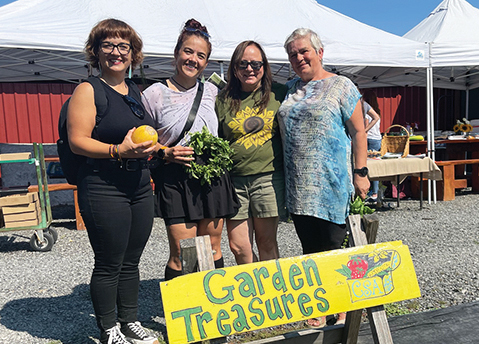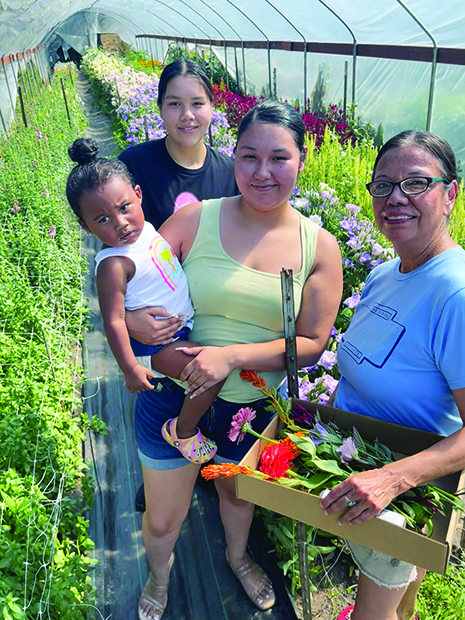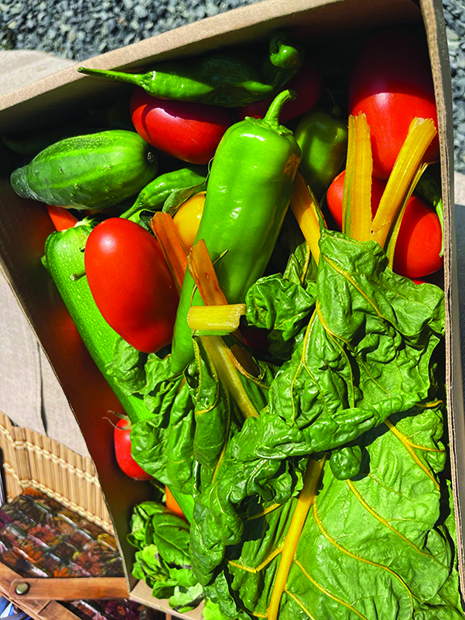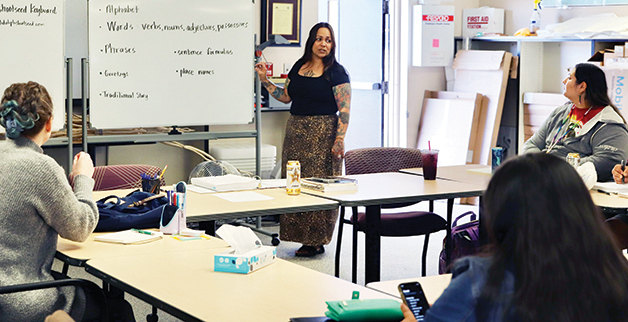
By Kalvin Valdillez, Tulalip News
During the lunch hour on September 16, close to a dozen community members gathered at the Lushootseed department library to embark on a language revitalization journey that will take place over the next several months.
Two large dry erase whiteboards, that would soon be filled with the 40 unique characters that make up the northern Lushootseed alphabet, were set behind the class instructor, Natosha Gobin. And once she had the attention of the classroom, she officially kicked off Lushootseed 101 with a welcome statement and a brief introduction of herself, her lineage, and family, which were all spoken in traditional Lushootseed.
Switching from her ancestral language to English, Natosha shared, “This was the (Tulalip Elementary) library when I went to school here. I also went to Marysville Middle School, Marysville Junior High School, and Marysville Pilchuck. And through all of those experiences, we didn’t have the opportunities to learn the language, to be able to honor our heritage, practice our cultural ways, and see all the cultural events that we see taking place today. It feels really good for us to be in this moment right now, where we can make sure that those opportunities we didn’t receive when we were younger are there for our kids, grandkids, and the next generations.”
Lushootseed 101, 102, and 103 follows a curriculum that was originally intended to equip potential language warriors with a strong foundation before stepping into a teacher’s assistant position with the Tribe. Natosha explained that the college level courses focus on grammar and sentence formula, and participants will learn phrases, greetings, personal introductions, names of places, and a traditional story. Students who enroll in the class through the Northwest Indian College are able to obtain 5 credits per course upon successful completion.
This year, two NWIC students elected to enroll in Lushootseed 101. Sitting at the front of the classroom, with bright smiles and open notebooks, were Tulalip tribal members, Mahayla and Odessa Flores.
Said Mahayla, “I’m looking forward to learning Lushootseed because I never really got the chance to learn my culture growing up. When I heard that I could learn the language (through NWIC), I thought this is it, I can finally learn more. I immediately took the opportunity. I literally dropped another class so I could take this one because it means a lot to me. For the longest time I didn’t know I had a mother language. When I figured that out, I was like, I need to learn it. And even though I might struggle, I’m committed to learning.”
Some years back, after gaining an interest from the Tulalip community and the Tribe’s employees, the Lushootseed department opened the class to auditors, who are able to participate throughout the course and receive a certificate at the end, in lieu of college credits.
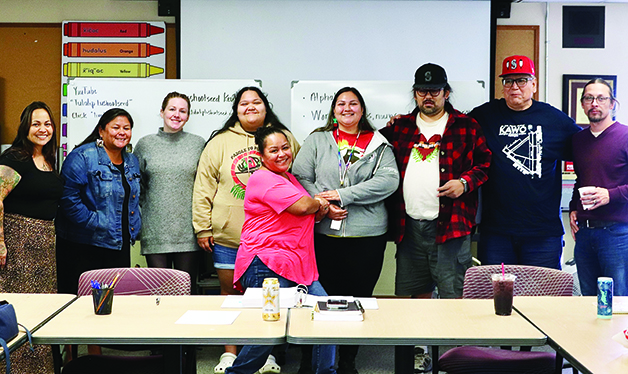
When asked about her decision to join Lushootseed 101 this fall, class auditor and Tribal member, Joyia Kinlicheeney, said, “It was time. I think learning the language is going to be really cool. I’m intimidated by the sounds and the dialect, but I’m excited to go home and be able to talk to my grandkids, because they already get to learn it at the elementary and TELA. It’s going to be so cool to be able to chat with them.”
Natosha shared that the duty to pass on the language through the courses fell upon numerous language warriors over the years, including Michelle Myles, Becky Posey, Toby Langen, Sarah Miller, and herself.
After years of teaching Lushootseed at Heritage High and MPHS, this is her second stint as a college course instructor. And Natosha is implementing a new way of learning by livestreaming each of her lectures on the Tulalip Lushootseed YouTube page.
“With livestreaming and having the class recorded, we want to make sure we are doing our best to support the needs of our participants,” stated Natosha. “We don’t ever want people to feel like – if one day you had a hard time grasping the content, don’t let that be the day to break you. We will provide any type of support. If you missed a day or two, or if you’re home sick, maybe you want to have it playing in the background so you can hear it, which is better than trying to have someone recap it to you in a couple minutes. And you’ll also have the recorded version as well, if you want to watch it again.”
Throughout the years, the reach of the Lushootseed department has extended not only to the college level, but they are also making a big impact at the Betty J. Taylor Early Learning Academy and in classrooms across the entire Marysville School District. Today, the language is accessible at most grade levels. As the youth continue to build upon that foundation year after year, they can step into the college courses well-prepared and ready to help progress the revitalization movement that much further.
In regard to how they will be exploring the language throughout the course, Natosha shared with the class, “It’s important to remind ourselves that our language was an oral language. We’re learning through written form, but the way our ancestors held on to our language since time immemorial was through speaking it. And they passed it down through speaking it. So eventually, we’ll get to a point where we’ll need to let go of some of those English influences and make sure that we start producing as close to what our ancestors provided for us. There’s a lot of different sounds than the English language. It makes the English language seem boring because we have sounds where you need to use the back of your throat; some harsh sounds, clicking sounds, we use the term guttural. There’s a lot of unique sounds that are a part of our language and as we build our ability to speak it and hear it, then comes the point where we need to fine tune it.”
Natosha shared how her love for the language developed while volunteering at the annual summer Lushootseed Camp for Tribal youth. After accepting a position with the Lushootseed department 24 years ago, she confidently stated that her love for the language has never wavered over the course of time.
If you are interested in taking the Lushootseed 101 course, it is not too late. Natosha is inviting you to join the class this year, whether in person or online. The classes are held daily, Monday through Thursday, at 12:00 p.m. – 12:50 p.m. You can just pop in or hop on YouTube, but if you would like to give Natosha a courtesy heads up, you can shoot her an e-mail at NGobin@tulaliptribes-nsn.gov or you can leave a message at her desk phone, 360-716-4499.
* Following a brief 24-hour editing period, the video recording of the livestream will be posted on the YouTube page.
